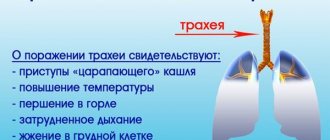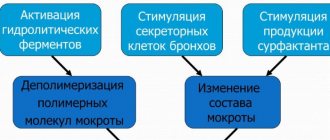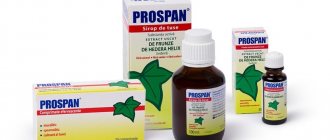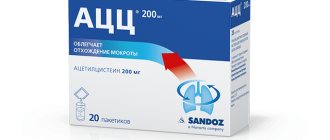Codeine cough syrup indications
The main purpose of codeine drugs is to combat pain and cough. In addition, products containing codeine can be used to relieve toothache, menstrual pain, and migraines.
As for the analgesic effect of codeine-containing drugs, according to pharmacists, it is not very strong. More effective means can be found for these purposes. But the antitussive effect of codeine drugs is really high.
Codeine syrups and tablets are used to get rid of a dry cough, in which mucus does not come out as sputum, and which usually has a very debilitating effect on a person. Therefore, drugs are prescribed for diseases such as:
- bronchitis;
- bronchopneumonia;
- emphysema.
Codeine is a semi-synthetic derivative of opium, it is obtained by methylation of morphine. It is part of a large number of analgesics and antitussives. The latter is possible due to the fact that this substance has a unique ability to act depressively on the cough center located in the medulla oblongata.
Cough syrups with codeine
Consider two types of syrup:
- Kofex. This codeine syrup has antitussive and antiallergic effects. It also works to prevent symptoms that may occur when histamine is released. Kofex also has an anti-edematous property, thanks to which it copes with discharge from the nasal cavity, as well as lacrimation.
- Tussamag. The syrup has bronchodilator and expectorant properties. Tussamag reduces the viscosity of sputum and also helps to normalize the functional activity of the respiratory system. The syrup is prescribed for diseases such as bronchitis, tracheitis, whooping cough, etc.
Codeine cough syrup is prescribed for both adults and children
So, codeine-containing drugs have “two sides of the coin”: on the one hand, they effectively relieve a dry cough, turn it into a productive one, and relieve pain, but on the other hand, codeine is a narcotic drug that has a number of side effects. Under no circumstances should you decide to purchase a product containing codeine on your own. This decision should be made by an experienced specialist after conducting a diagnostic examination. Be sure to follow the exact dosage, frequency and duration of treatment, and forget about coughing!
Narcotic properties
When used in high doses, like other opiates, it can cause euphoria. Serious poisoning is often possible when taking a large number of tablets of some codeine-containing medications.
With regular use of codeine, an addiction phenomenon occurs (similar to addiction to heroin and other drugs of the opioid group).
When the therapeutic dose is exceeded (0.1 g and above), it causes agitation, nausea, and sometimes a feeling of “heavy head,” but, unlike morphine and opium, it has a much less hypnotic effect. It has 40 times less pronounced affinity for μ-opioid receptors than heroin, the main effect is achieved through demethylation into morphine (5%) in the liver using the CYP2D6 enzyme, the rest is metabolized into codeine-6-glucuronide (70%) and norcodeine.
Impact on culture
Codeine-containing cough syrups are very popular in the southern United States. The Texas musical genre Chopped and screwed - southern rap slowed down by several BPMs - was formed under the influence of codeine. The founder of the genre, DJ Screw, died in 2000 at the age of 29. See Purple drank (in English) for more details.
Stephen King's novel Misery describes, among other things, the protagonist's addiction to the fictional codeine-based painkiller Novril. The preface to the novel contains a warning about the possible dangers posed by both the drugs of this kind and the conditions under which they are stored.
“Of course, there is no such drug as Novril, but there are some other codeine-based drugs that have similar properties. Unfortunately, these drugs are often stored very carelessly in medical institutions, which can lead to the most unpredictable consequences.”
In the cult TV series House MD, the main character regularly takes the painkiller Vicodin, which contains hydrocodone, a semi-synthetic derivative of codeine.
Ban on over-the-counter sales in Russia
Codeine is included in List II of the List of narcotic drugs, psychotropic substances and their precursors subject to control in the Russian Federation.
A ban on the free sale of drugs containing codeine was introduced in June 2012. Codeine in large doses can cause euphoria, and regular use can lead to addiction. At the same time, codeine is found in many medications: antipyretic, antitussive, analgesic, antimigraine. It is used for migraines, headaches, toothaches, febrile syndrome, post-traumatic pain and in a number of other cases. As a result, the banned tablets included the following tablets: Pentalgin, Nurofen Plus, Caffetin, Sedalgin, Codelmixt, Sedal-M, Codterpin, Solpadein, Kodarin, Terpinkod, “Codelac” and “Codesan”, cough syrup “Kofex”, sedative mixture of Bekhterev and other popular medicines.
In December 2013, the state refused to regulate some drugs containing codeine, maintaining their prescription availability.
Also, the relevant substances are excluded from the lists used to assess significant, large and especially large quantities of narcotic drugs in order to bring citizens to criminal liability. For example, previously the shipment or sale of almost any codeine-containing drug was considered a serious crime and was punishable by up to eight years in prison. The buyer could receive 250 tablets for up to three years in prison, and the seller for up to 12 years. According to general rules, criminal cases related to the illegal use of drugs excluded from the list of drugs should be terminated.
Codeine-containing cough preparations: codeine syrup and tablets
If a patient experiences painful, prolonged bouts of dry cough, where the mucus cannot clear on its own and the mucus spreads deep into the lungs, the doctor may prescribe cough syrups or tablets with codeine.
Codeine is produced through methylation of morphine. This substance is considered a semi-synthetic derivative of opium; it has analgesic properties and is often added to many analgesic drugs.
This alkaloid is also included in some codeine-containing cough medicines and preparations.
This is due to the fact that codeine has a unique ability to inhibit the activity of the cough center, which is located in the medulla oblongata.
What are codeine-containing drugs and their features
The main purpose of such medications is to relieve patients from pain and severe cough.
Codeine-containing drugs are also used for headaches, menstrual pain, toothache and other pain. However, codeine cough suppressant is believed to be addictive if used excessively. As pharmacists note, in general, this is a fairly weak pain reliever that has a narcotic effect. Similar to the action of morphine, tablets or syrup have an analgesic effect, but the effect is not strong. However, these drugs suppress cough quite effectively.
Codeine is used as an independent component or in combination with other drugs in the form of syrups, tablets, ampoules. If necessary, this medicine is taken every six hours.
It is important to follow the instructions and recommendations of doctors. Do not take an increased dosage or violate the frequency of use of the medicine.
How do codeine-containing medications work?
Compared to other narcotic-containing painkillers, codeine acts humanely on the body and is gentle on the digestive system and does not disrupt the digestion process. After codeine enters the body, it affects the cough center of the brain, the respiratory centers, thereby stopping the reflexes and urge to cough.
After the drugs are processed in the liver, the resulting metabolites act as painkillers. Thus, the analgesic effect can be observed 20-30 minutes after the patient has received the injection. The best effect occurs an hour after the injection.
If the patient took tablets or syrup, the drugs will begin to act after 45 minutes, and the greatest activity of the drug will occur after one and a half to two hours. The healing and analgesic effect lasts for four to six hours.
Since codeine itself is a very weak medicine, it is most often added to other analgesics. Thus, codeine is included in the drugs Arbidol, Nurofen Plus, Sedalgin, Codelac, Pentalgin, Sedalgin, as well as some syrups.
Injections, tablets and syrups with codeine are prescribed in the following cases:
- For prolonged dry cough – bronchitis, bronchopneumonia, emphysema;
- Mild pain syndrome, in particular with headaches, diarrhea, neuralgia in combination with other analgesic drugs;
- Codeine cough syrups and tablets should not be used to treat children under two years of age. This is due to the fact that codeine-containing drugs can cause all sorts of side effects in all body systems and internal organs.
Why is codeine dangerous?
Despite the fact that such cough medicines are considered effective, recently doctors have been cautious in prescribing such drugs and only if the disease is severe or other medications do not help the patient.
What is the danger from using medications with codeine? As mentioned above, codeine is an opium alkaloid, for this reason such drugs can cause serious poisoning and drug addiction. Patients in this case experience the following symptoms:
Dizziness, nausea, sometimes vomiting; in case of an overdose, a person may experience insomnia or nervous overexcitation.
- Frequent constipation and allergic reaction to the active substance.
- If the drug is used very often and in large quantities, the patient experiences a state of euphoria in the form of a narcotic state of bliss.
- With prolonged use, psychological and physical dependence develops.
After the patient regularly takes tablets or an inexpensive and effective cough syrup with codeine, his pain disappears and his condition improves. However, after some time the pain returns, which is why the patient begins to take the drug again. Feeling that the medicine is not helping properly, the dosage of the drug is gradually increased. As a result, the need for medicine increases.
In case of uncontrolled use of medicines with codeine for cough, the patient may experience withdrawal symptoms, as in drug addiction. This condition manifests itself in the form of severe pain inside the muscles, depression, and suicidal tendencies. According to some doctors, this phenomenon has a more complex effect on the body than drugs with the addition of heroin.
Even if codeine-containing drugs are taken under the supervision of a doctor and the dosage is strictly followed, cough medicine can cause drowsiness, social apathy, and disruption of the digestive system.
It would seem that a seemingly harmless cough syrup with codeine has been used in the United States for several years as one of the components of a narcotic drink. Young people add Sprite, promethazine and other components to the liquid syrup. In addition to respiratory depression, this deadly drink is dangerous because it contains promethazine, which has an effect on the central nervous system.
At lower dosages, this drink causes swelling and dilation of blood vessels.
An additional danger is that codeine and promethazine are not recommended to be used together. Also, you should not take promethazine with alcohol at the same time.
Use with other drugs
Before you start taking medications, you should consult your doctor.
It is important to inform him about the presence of any allergic reactions to codeine and other components. It is advisable to obtain a complete list of ingredients that make up the drug. You also need to tell what medications, vitamins, and supplements the patient takes. The doctor especially needs to have information if the patient has been taking antidepressants, medications for mental illness, sleeping pills, tranquilizers or cough tablets for a long time. Based on the data obtained, it will be more convenient for the doctor to monitor the treatment and adjust the dosage.
If the patient has had asthma attacks or has been diagnosed with intestinal obstruction, codeine should be discontinued. It is also necessary to take into account if the patient has previously abused alcohol. It is not recommended to use medications if you have had bladder or abdominal surgery.
You should definitely tell your doctor if the patient has previously had:
- Mental illnesses;
- Head injuries;
- Increased brain pressure;
- Convulsions;
- Lung diseases;
- Diseases of the intestines, liver, thyroid gland, kidneys, pancreas;
- Hypotension.
When planning, becoming pregnant or breastfeeding, you should completely stop using the drug. If you continue to take the medication while breastfeeding, your baby may experience withdrawal symptoms such as irritability, hyperactivity, vomiting, weight loss, and insomnia.
When visiting a surgeon or dentist, it is important to remember to inform the doctor that you are taking codeine. Codeine also often causes constipation. If the patient has any problems or disturbances in the functioning of the body, you need to contact your doctor, review your diet or start using a different drug for treatment.
The video in this article will clearly demonstrate the dangers of codeine-containing drugs.
stopgripp.ru>
What are codeine-based drugs?
Severe attacks of dry and barking cough, as well as pain, can be eliminated with the help of drugs whose main active ingredient is codeine. To date, medications have been developed with this substance that help not only overcome unproductive coughs, but also act effectively:
- with painful menstruation;
- toothache and headache.
Important! The main point that must be observed when taking such medications is strict adherence to the recommended dosages and number of doses.
Such recommendations can be prescribed by the attending physician, and all the necessary information is provided in the instructions for use of the drug.
The fact is that codeine is a substance that is obtained as a result of methylation of morphine. The latter is a synthetic derivative of opium, which has a pronounced analgesic effect.
Today, many drugs of the analgesic group contain codeine, and it acts as the main component or is one of the auxiliary components. Such medications are produced in a wide variety of forms: tablets, syrups, injection ampoules.
What is codeine
In general, experts classify codeine as a dangerous substance and very often, and especially uncontrollably, prohibit its use. So what is codeine? This is a narcotic substance that is of plant origin. The substance is included in many analgesics because it has pronounced analgesic properties.
If we talk about the use of codeine in the treatment of cough, then the wide popularity of the substance is explained by its ability to suppress the cough center. Codeine is a synthetic derivative of opium.
A painful dry cough is an indication for the use of codeine-containing products. Still, you should not forget that a variety of reasons can provoke a symptom, so self-medication is unacceptable. Although many drugs containing codeine are sold freely in pharmacies, they should not be abused. Yes, they will quickly help get rid of a painful cough, but they are not harmless.
Typically, drugs containing codeine are prescribed only after other antitussives have failed. Often, such drugs are taken in a hospital setting, since you need to be extremely precise with the dosage of the substance.
Codeine is the active ingredient in many cough medications.
Side effects
When treated with Codeine drugs, unwanted side effects sometimes occur. Most often it is constipation and drowsiness.
Less frequently developed:
- dry mucous membranes, nausea, spasms in the gastrointestinal tract, anorexia, vomiting, paralytic ileus;
- flatulence, spasms of the bile ducts;
- dizziness, fatigue, hallucinations, blurred vision, depersonalization;
- paradoxical reactions (most often in children), anxiety, psychomotor agitation and insomnia;
- cardiac arrhythmia, low blood pressure;
- increased sweating, an imaginary increase in vitality, discomfort and irritability;
- respiratory depression, up to collapse of the lung lobe;
- decreased intensity of diuresis, pain and difficulty urinating;
- allergic reactions in the form of skin rash and itching, urticaria, swelling, laryngeal edema, broncho- or lagingospasm.
Rarely may occur:
- toxic liver damage, gastralgia;
- nightmares and restlessness during sleep, depression, convulsions, tremors;
- a sharp increase in the tone of the respiratory muscles, involuntary twitching, ringing and tinnitus;
- increased blood pressure;
- increased smooth muscle tone, bladder atony;
- weight gain or weight loss.
It should also be noted that during treatment, drug dependence and addiction to the drug may develop. After cessation of therapy - withdrawal syndrome.
What are the dangers of codeine?
It is a derivative of morphine and is often used in the pharmaceutical industry to produce drugs.
Often, recently, people with drug addiction purchase codeine-containing drugs for the purpose of producing desomorphine. This is a hard drug that can develop severe addiction. It is highly toxic.
It is for the purpose of preventing such actions that codeine-containing drugs are sold by prescription, and their sale in pharmacies is regulated by Decree of the Government of the Russian Federation No. 599 of July 20, 2011 “On control measures regarding drugs that contain small quantities of narcotic drugs, psychotropic substances and their precursors included in the list of narcotic drugs, psychotropic substances and their precursors subject to control in the Russian Federation.” This document contains a list of drugs that can be sold in pharmacies only with a doctor's prescription. Such medicines should not be available for free sale.
This component has some analgesic effect, and most importantly, it suppresses the cough reflex well.
Codeine has a much gentler effect on the gastrointestinal tract than other similar drugs.
The patient begins to feel the effect of the medicine after taking it approximately 40-45 minutes. Drugs containing codeine are usually prescribed for dry coughs or to relieve various types of pain.
It is strictly prohibited to use any codeine-containing drugs to treat children under 2 years of age.
Drugs in this series can have various side effects, and in quite large quantities. Also, they all have a number of specific contraindications for use.
Since codeine itself is not a strong pain reliever, additional analgesics are usually added to the medications to alleviate the patient’s condition. There are two types of medicines containing codeine:
- combined analgesics. These are medicines that contain, in addition to codeine, components with a strong analgesic effect.
- cough syrups and tablets with codeine.
jpg" Before purchasing any of these drugs, you must carefully study the manufacturer's instructions, paying special attention to the side effects of the drugs and contraindications.
The first group includes solpadeine, pentabufen, pyralgin, santotitralgin, santoperalgin, sedalgin-Neo, etc.
Where to buy codeine cough syrup in Russia
Tablets and syrups containing codeine are sold in pharmacies. Due to the fact that the main ingredient of these drugs is a strong alkaloid, they are sold to customers only with a prescription.
You can get a prescription for these highly effective antitussives by contacting your general practitioner or pediatrician if your child is sick. Of course, careful adherence to medical recommendations in terms of treatment, and especially the dosage and duration of taking codeine syrups, is very important. This is necessary in order to avoid the possibility of negative and even dangerous health consequences.
Cough is one of the main symptoms not only of colds, flu, respiratory infections, respiratory diseases, it can also indicate the presence of a variety of pathologies, including an allergic reaction.
We ask you to draw your attention to the entry into force of legislation on the sale of Codeine medicines.
Interaction
Strengthens the inhibitory effect of ethanol on the speed of psychomotor reactions. With the simultaneous use of ethanol, muscle relaxants, as well as drugs that depress the central nervous system, increased sedation, suppression of the respiratory center and depression of the central nervous system are possible. When taken simultaneously with other opioid analgesics, it increases the risk of depression of the central nervous system, respiration, and decreased blood pressure. Enhances the effects of antihypertensive and antipsychotic drugs (neuroleptics), anxiolytics (tranquilizers), barbiturates and drugs for general anesthesia. Naloxone and naltrexone are specific antagonists.
Effects of codeine on the human body
The main purpose is to relieve coughing attacks, as well as an analgesic effect, and an effect on the central nervous system as a narcotic drug.
In medicine, codeine is used as:
- Antitussive.
- Painkiller.
- Inhibition of the activity of the gastrointestinal tract.
Drugs containing codeine affect the parts of the brain responsible for the cough mechanism. After entering the body, they block pain receptors. This allows you to create an additional analgesic effect and use it effectively for colds.
The use of codeine allows you to excite opiate receptors in the nervous system and peripheral tissues. The minimum dosage of methylmorphine has a gentle effect on the functional activity of the peripheral nervous system. If the dose is exceeded, the alkaloid becomes a narcotic substance, causing euphoria, increased relaxation and provokes a short-term loss of consciousness.
Long-term use of drugs based on methylmorphine provokes addiction to the drug. Codeine helps reduce peristalsis and relax intestinal smooth muscle tissue. Compared to morphine, it has a more gentle effect. Does not interfere with respiratory function. The likelihood of developing side effects from the digestive system when taking it is minimal.
When penetrating the intestines, codeine acts on opiate receptors and interferes with the normal functionality of the intestines. The speed of action of codeine for dry cough and other pathologies depends on the form of the drug. Oral medications are effective after half an hour, and when administered parenterally, after 10–15 minutes.
Codeine for cough in tablet form
Cough preparations with codeine in tablet form can be used continuously for 3-5 days. When treating dry cough, the following tablets are used:
- Kodesan,
- Codelac,
- Kodarin.
These codeine cough medications can be used to treat adults and children over 12 years of age.
Thanks to the main active ingredient, cough relief occurs. And the auxiliary components make it possible to stop the inflammatory process and relieve pain without causing obvious drowsiness in the patient.
The exact dosage of the drug, as well as the treatment regimen, should be determined only by the attending physician. In this case, the specialist must take into account the age and general health of the patient.
Kodesan
Each tablet, in addition to codeine, contains the following auxiliary components:
- Thermopsis extract,
- Dry crushed licorice root,
- sodium bicarbonate,
- Calcium stearate,
- Cellulose,
- Silica.
During the day, the drug is taken 1 tablet 2-3 times a day in adults, and 1-2 times in children over 12 years of age. The duration of therapy is no more than 5 days.
Codelac
Codeine-based medicine contains the following additional components:
- sodium bicarbonate,
- Licorice root, ground to a powder,
- Lancent thermopsis in powder form.
The medication is taken 2 times a day, regardless of the meal schedule. The duration of therapy should not exceed 5 days.
The product is mainly used by adults. Treatment of children over 12 years of age is possible only with the agreement of a doctor.
Kodarin
1 tablet of Kodarin contains the following active ingredients:
- Terpinhydrate,
- Sodium bicarbonate,
- Fine crystalline cellulose,
- Magnesium stearate,
- Corn starch,
- Croscarmellose sodium,
- Povidone.
The main component is codeine phosphate.
Taking the tablet drug Kodarin should be carried out exclusively after meals, according to the following scheme:
- For adults, 1 tablet 3 times a day,
- Children from 12 to 18 years old, 1 tablet 2 times a day.
In some cases, it is allowed to use the drug Coderine to treat dry cough in a child aged 6-12 years. In this case, the therapeutic agent is taken ½ tablet 1 or 2 times a day. In this case, the break between doses of the drug should be more than 6 hours. This will avoid an overdose of the drug.
The continuous course of cough treatment with Coderin is 3-5 days.
Types of codeine syrups
Let's look at the most common types of codeine drugs produced in the form of syrup.
Kofex
This drug is used for various infectious diseases and allergies accompanied by a dry cough. It consists of codeine phosphate, which has an inhibitory effect on the cough center, and chlorpheniramine maleate, which has an antiallergic effect in the form of reducing swelling of the respiratory mucosa and reducing inflammation in the body.
The syrup has a sweet taste and pink color, is taken undiluted, but can be washed down with water if desired. It is advisable to take the medicine after meals to reduce the likelihood of side effects.
The drug can be taken by children from six years of age. For children from 12 years of age and adults, the dosage is five ml four times a day; for children from six to twelve years of age, the dosage is 2.5 ml per day.
Cofex syrup is taken for no more than nine days.
Possible side effects may include discomfort in the heart, gastrointestinal tract, headaches, and increased nervous excitability.
Cofex syrup has the following contraindications:
- Pregnancy and lactation;
- Age up to six years;
- Heart rhythm problems;
- Alcohol intoxication;
- Epilepsy;
- Head injury;
- Various liver and kidney diseases;
- Increased pressure inside the skull;
If the patient drives transport, then the treatment chosen is of a different nature, drugs that will not contain codeine.
Codelac phyto
This drug is a dark brown syrup with the smell of medicinal plants. It is only available in syrup form. Prescribed as a drug for coughs of colds or allergic etiologies.
Codelac phyto contains codeine phosphate, which reduces the cough reflex, herbal thermopsis extract, which has an expectorant effect, and thyme, which reduces spasms and inflammation.
Take this syrup during or immediately after meals. Side effects may occur when taken on an empty stomach.
Take this codeine-containing drug, five ml 3 or 4 times a day, for adults and children over 12 years of age. Children from eight to twelve years old - 5 ml 2-3 times a day, and children from five to eight years old - only 5 ml twice a day and no more.
Treatment lasts no more than five years and is determined only by a medical specialist. An overdose may cause headaches, digestive problems, increased fatigue, and skin rashes.
This syrup has the following contraindications:
- Pregnancy and breastfeeding;
- Children under two years of age (from two to five are prescribed by the decision of the pediatrician);
- Disturbances in the functioning of the respiratory system;
- Bronchial asthma;
- Drinking alcohol;
- Individual intolerance;
This codeine syrup should not be combined with mucolytic and expectorant drugs.
Neo-Kodion
The following type of codeine syrup can be prescribed as a cough remedy for adults and children over two years of age.
In addition to codeine, this drug contains ascorbic acid, bromopharm and ipecac syrup.
It is available in both syrup and tablet form. Since the therapeutic effect when taking tablets occurs more slowly, it is more advisable to use a syrup produced specifically for them when treating children. For adults, this medicine is prepared separately.
For adults, the recommended dose is 15 ml 2-4 times a day; for elderly people over 60 years of age and if there is liver disease, then the norm is halved.
Children from 2.5 to 6 years old are prescribed the drug 2.5 ml, from 6 to 8 years old 5 ml, from 8 to 12 years old 10 ml.
Increasing the dosage entails respiratory dysfunction, nausea, and skin itching.
The drug has the following contraindications:
- Individual sensitivity to the components of the drug;
- Bronchial asthma;
- First trimester of pregnancy and lactation period;
- Hypersection of sputum;
Syrups with codeine can be stored for no more than 60 months from the date of manufacture. Like all Schedule A drugs (poisons and dangerous drugs), codeine drugs must be kept in an inaccessible place, locked. It is strictly forbidden to leave such medications near children.
Codeine drugs have an average pricing policy. Has a number of similar medications.
Any codeine drug is used only with a prescription from your doctor. Self-medication can have a detrimental effect on human health, especially on the health of a child.
The effects of codeine-based syrups on the body
Severe attacks of dry and barking cough, as well as pain, can be eliminated with the help of drugs whose main active ingredient is codeine. To date, medications have been developed with this substance that help not only overcome unproductive coughs, but also act effectively:
- with painful menstruation;
- toothache and headache.
Such recommendations can be prescribed by the attending physician, and all the necessary information is provided in the instructions for use of the drug.
The fact is that codeine is a substance that is obtained as a result of methylation of morphine. The latter is a synthetic derivative of opium, which has a pronounced analgesic effect.
Today, many drugs of the analgesic group contain codeine, and it acts as the main component or is one of the auxiliary components. Such medications are produced in a wide variety of forms: tablets, syrups, injection ampoules.
Despite the effectiveness of cough medicines that contain codeine, they should be taken with extreme caution and only under the close supervision of the attending physician. It should be noted that medications in this group are prohibited for the treatment of children under 2 years of age, as they can cause a variety of side effects and negatively affect the child’s systems and organs. In addition, this drug is not suitable for use during pregnancy and breastfeeding.
That is why today such drugs are sold according to medical prescriptions and are prescribed by a doctor when other drugs do not bring the desired effect.
Side effects that may occur when taking codeine-based medications include:
- nausea or vomiting;
- dizziness;
- stimulation of the nervous system;
- insomnia.
The use of the drug in doses that exceed the permissible limits can lead to the following consequences:
- the occurrence of allergic reactions to the main component;
- disruptions in the digestive tract, constipation;
- Long-term use of medication can contribute to addiction - cause physical and psychological dependence;
- Significant excess of recommended doses and quantities of doses causes the onset of a state of euphoria and a narcotic high.
Systematic use of medications with codeine leads to an improvement in the patient’s condition and the elimination of painful sensations. Over time, the need to take a medication increases, as a result of which a person is forced to take it in an increased dosage and much more often. With uncontrolled use of such drugs and addiction to them, patients may experience withdrawal, as with drug addiction. As a result, depression begins to develop, severe muscle pain occurs, and thoughts of suicide appear.
Therefore, you should not self-medicate or take medications without first consulting a medical specialist.
Colds and flu during periods of seasonal exacerbations are often forced to take a large number of different medications in order to quickly eliminate all the symptoms that appear. The modern way of life makes people forget that the disease is best tolerated in a state of complete peace and relaxation.
Before taking codeine-based medications, you should tell your doctor about the presence of allergic reactions in your body, and also inform about the medications you are taking. These include all dietary supplements or vitamins.
The attending physician must have complete information, which includes the following data:
- about the patient taking medications from the group of antidepressants or medications for various mental illnesses, sleeping pills or tranquilizers;
- about the use of other tablets and cough suppressants.
It is based on all of the above individual characteristics of the patient that the medical specialist will be able to establish the required dosage and number of doses.
Negative consequences can also occur from codeine-containing medications if you consume alcoholic beverages during treatment.
Contraindications also include the use of codeine during previous surgical interventions on the bladder or other organs of the genitourinary system.
In addition, the patient should tell the attending physician about pre-existing diseases and health problems, such as:
- mental illnesses;
- various head injuries;
- increased cerebral pressure;
- hypotension;
- inflammatory processes in the lungs;
- convulsions;
- various pathologies of the kidneys or liver, diseases of the intestines and pancreas, and the endocrine system.
Pregnant women are strictly prohibited from using codeine-based medications. Moreover, even when planning to conceive a child, it is better to use medications from other groups to treat cough. During breastfeeding and using codeine therapy, a negative result may occur, which consists of the appearance of withdrawal symptoms in the baby, irritability or increased activity, vomiting, insomnia or weight loss.
Reviews from most consumers indicate that codeine cough syrup is one of the most effective drugs that help eliminate even the most severe attacks that occur with the onset of seasonal illnesses. At the same time, do not forget that this substance is classified as a narcotic, which requires careful use.
Today, modern pharmaceutical manufacturing companies offer various drugs containing different doses of codeine in their composition. The most popular codeine-containing drugs, which are available in the form of syrups, are:
- Kofex. It is often prescribed for allergic coughs, as well as for infectious diseases.
- Tussamag.
- Codelac Phyto. Allows you to reduce the intensity of attacks of dry cough, as it suppresses the excitability of the cough center in the brain. Your doctor may prescribe this medication if you have a nonproductive cough caused by colds or allergic reactions. The main active ingredients of this syrup are codeine phosphate, thermopsis and thyme herbal extract. The duration of taking the drug should be prescribed by the attending physician and should be 3-5 days. Depending on the age and health status of the patient, the required dosage is selected.
- Neo codion is a medical preparation in the form of syrup for the treatment of dry cough in children and adults. Neo codion contains codeine, ascorbic acid, and bromopharm. In case of overdose, the patient may experience vomiting, itchy skin, severe dizziness, or difficulty breathing.
Codeine cough syrup can be purchased in city pharmacies only with a prescription, which must include the names of the medications.
Codeine syrup is prescribed to suppress cough in the treatment of the following respiratory diseases:
- whooping cough, parawhooping cough;
- emphysema;
- bronchopneumonia;
- bronchiectasis.
The medicine helps to cope with dry cough during classical treatment, and also makes it easier to endure the postoperative period.
Before prescribing codeine syrup, the doctor must make sure that the patient does not suffer from the following diseases:
- mental health disorders;
- high intracranial pressure;
- low blood pressure;
- disruption of the thyroid gland;
- liver, kidney failure;
- ulcers in the stomach, duodenum.
In addition, the patient must have no history of traumatic brain injury.
If the dosage calculated by the doctor is not followed, or if there is an individual intolerance to the components of codeine syrup, the patient may experience the following side effects:
- decreased blood pressure, dizziness, weakness;
- headaches, thirst, dry mouth;
- intestinal disorders, abdominal pain;
- allergic reaction in the form of redness, rash on the skin;
- increased nervousness, dilated pupils, convulsions.
If symptoms of codeine poisoning appear, call a medical professional. Before their arrival, give the patient activated charcoal (1 tablet per 10 kg of weight), a laxative.
When a doctor prescribes a syrup containing codeine, it is necessary to warn him if the patient is taking any other medications. In addition to active medications, you need to inform your doctor if you are taking vitamins or dietary supplements. If the patient is being treated with other cough medications, the doctor should know about this.
Antitussives enhance the effect of codeine, mucolytic drugs should absolutely not be taken with antitussive codeine syrup, and expectorant medications have the opposite effect and cancel the effect of codeine.
The doctor, knowing what other medications the patient is taking, will be able to assess the rationality of using codeine syrup and correctly calculate the dosage.
As mentioned above, codeine syrups are contraindicated for children under three years of age, pregnant women and breastfeeding women. In addition, contraindications for use are:
- mental disorders;
- history of traumatic brain injury;
- increased intracranial pressure;
- low blood pressure;
- pneumonia;
- convulsive syndrome;
- thyroid diseases;
- renal and liver failure;
- intestinal diseases;
- stomach and pancreatic ulcers
Pharmacodynamics and pharmacokinetics
What is Codeine and how does it work?
In terms of its pharmacological activity, the substance is closest to morphine, but its analgesic effect is less pronounced. The drug best suppresses the cough reflex; respiratory depression is less pronounced than other drugs in this group. There are known cases of paradoxical excitation of the nervous system after taking Codeine, which are accompanied by insomnia.
The drug is an agonist of mu-opiate receptors, has the ability to inhibit the cough center, stimulate opiate receptors in peripheral tissues and various parts of the nervous system. Affecting receptors of this kind in the periphery is accompanied by activation of the antinociceptive system and a change in the mechanism by which the body perceives pain.
Physical properties
Codeine base is colorless crystals or white crystalline powder, odorless and bitter taste. It erodes in the air. Solubility in water: 1:120 at 25 degrees; 1:60 at 80 degrees and 1:17 at 100 degrees. In alcohol 1:9.5. Poorly soluble in diethyl ether (1:50). It dissolves best in chloroform (1:0.5, according to other sources 1:1), which is often used to extract the latter of codeine-containing substrates; solubility in benzene is 1:10. Practically insoluble in petroleum ether and alkali solutions, except ammonia. Aqueous and alcohol solutions have an alkaline reaction. From wet diethyl ether, codeine crystallizes as a monohydrate (C18H21NO3•H2O) with a melting point of 155 °C.
List of drugs containing codeine
List of the most famous cough medicines with codeine:
- Codelac. One tablet contains 8 mg of the active element. Indicated for cough attacks of various types. Highly effective for colds. It depresses the part of the brain responsible for sending nerve impulses that lead to coughing. Thins mucus and promotes expectoration. The main consequences of taking: headaches, continued feeling of drowsiness, vomiting and nausea, constipation. May cause allergies. Accepted from 18 years of age. The duration of the effect is up to 12 hours.
- Terpincode. One tablet contains 8 mg of the weak opiate element. A potent medicine that irritates the cough center and dilutes phlegm. Indicated for pathologies of the lungs and respiratory tract. Prescribed for adults, as well as children aged two years and older. Side effects include: nausea and vomiting, problems with bowel movements, headache, increased drowsiness. Can cause allergies. The maximum course of therapy is 5 days.
- Codterpin. Codeine in one tablet is 15 mg. Indicated for the treatment of dry as well as productive cough with a strong cough reflex. Main side effects: problems with bowel movements, physical dependence due to prolonged use. The course duration is 5-10 days. Children require regular, strict medical supervision.
- Codipront. Available in the form of capsules and syrup. One capsule contains 30 mg of codeine. In 5 ml of syrup - 11.1 mg. It has a long-term effect on the body - cough can go away for a period of 12 hours. In addition to codeine, the product contains phenyltoloxamine, which has a mild sedative effect and anti-allergenic effect. Indicated for influenza, bronchitis of various types, whooping cough, infectious diseases and a number of allergic reactions that involve the upper respiratory tract. Codipront is contraindicated in children under 14 years of age (unless prescribed by a doctor), pregnant women and the elderly. Also, the medicine is not suitable for diabetes and some types of glaucoma. Side effects: headaches, increased drowsiness, blurred vision, irritability, problems with urination and bowel movements.
- Kodesan. One tablet contains 0.0095 g of codeine phosphate. Instant medicine. Indicated for severe coughing - to suppress attacks. Allowed for use from 12 years of age. Side effects: nausea and vomiting, stomach pain, arrhythmia, arterial hypotension. The average course duration is 5 days.
- Kodarin. One tablet contains 10.9 mg of codeine phosphate. Indicated for bronchitis, pneumonia, pharyngitis, as well as colds accompanied by a cough. Increases coughing. Available only by prescription.
The names of the listed drugs are the most well known. Most of them can be purchased without a prescription. Your doctor may prescribe other tablets containing codeine. To clarify its presence among the components, you should contact official sources.
Children's formulations most often contain a minimal dosage of the substance and are predominantly in the form of syrups rather than tablets. All medications have instructions. However, the exact dosage and duration of the course are prescribed only by a doctor - after clarifying the medical history and correct diagnosis.
Some of the listed remedies are not compatible with others. Before visiting the hospital, it is recommended that you make a list of all your medications (prescription and over-the-counter), as well as vitamins, minerals, and supplements.
Instructions for use of Codeine
For adults, codeine for cough is recommended to be taken 4 times a day, 10-20 mg; the drug is prescribed for diarrhea with the same frequency of doses of 30 mg. To eliminate pain, codeine should be taken every 3-6 hours, 15-60 mg. The maximum daily dose of codeine for adults should not exceed 120 mg.
The daily dose of codeine for children for pain and diarrhea is 0.5 mg/kg, the frequency of doses is 4 times; if necessary, to eliminate pain, the number of doses can be increased up to 6 times.
Codeine for cough is not recommended for use in children under two years of age, but children over 6 months of age can be prescribed codeine phosphate at a dose of 2-10 mg at a time.
For cough, children 2-5 years old are recommended to take 1 mg/kg per day, the dose is divided into 4 doses. Another dosage regimen is also possible, according to which every 4-6 hours (no more than 4 times a day) children are prescribed the following doses of codeine: over 2 years old, whose body weight exceeds 12 kg - 3 mg; over 3 years old, with a body weight of more than 14 kg - 3.5 mg; over 4 years – 4 mg; over 5 years – 4.5 mg; 6-12 years – 5-10 mg.
Chemical properties
Codeine - what is it?
According to Wikipedia, the substance is an opium alkaloid, an antitussive with central action. The drug is a natural pain reliever from the group of opiate receptor agonists.
Opium contains from 0.2 to 2% of this alkaloid. The compound is also obtained using the methylation reaction of morphine. When treating young children, Codeine Phosphate, a derivative of Codeine, is used.
The pharmacopoeial monograph states that the molecular weight of the drug = 299.4 grams per mole. The compound appears as white or colorless crystals, odorless, with a specific bitter taste. If exposed to air for a long time, the product will erode. Codeine dissolves poorly and slowly in cold water and well in hot water and alcohols. Codeine solutions give an alkaline reaction.
When used in large dosages, the drug acquires the properties of a drug and causes euphoria. In pursuit of this kind of sensation, if you take a dose significantly higher than the therapeutic dose, you can become poisoned by Codeine. With regular use, the medicine is addictive. Therefore, on the territory of the Russian Federation, the circulation of the substance and its precursors is subject to state control.
List of codeine-containing cough medications
Today, the pharmacological market is replete with codeine-containing remedies for dry and wet coughs. Due to the fact that codeine in maximum dosage becomes a narcotic substance, such drugs are sold only with a doctor's prescription.
There are two types of codeine contents.
- Painkillers: “Pentalgin-N”, “Nurofen Plus”, “Sedalgin”, “Sedal-M”, “Caffetin”, “Solpadein”, “Sedalgin-Neo”.
- Cough tablets with codeine: “Codelac”, “Codelac Phyto”, “Codelac broncho”, “Terpinkod”, “Codterpin”, “Tedein”, “Cofeks”.
The first group is represented by combined broad-spectrum analgesics. Such drugs normalize body temperature, tone, soothe, and relieve spasms. They are often prescribed for dental, joint, muscle and headache pain, and fever. The release form can be any: tablets, suspensions, syrups. The question of the advisability of taking a particular medication is decided by the doctor, taking into account the patient’s age and individual characteristics of the body.
The second group of drugs is designed to eliminate long-term debilitating cough, when mucus accumulates in the respiratory tract and descends into the lungs.
The following medications effectively remove phlegm.
- Codelac tablets have antitussive and expectorant properties. Their action is aimed at removing mucus naturally. The drug is based on licorice root and thermopsis herb. Each tablet contains 8 mg of codeine, the concentration of which is achieved in the blood within an hour after administration. The medicine is taken in the strictest dosage: one tablet twice a day. It should not be taken during pregnancy and breastfeeding.
- Codeine cough syrup "Codelac Phyto" treats dry and productive cough of any etiology. In addition to the main substance - codeine, it contains the herbs licorice, thermopsis and thyme, which help increase secretion by the bronchial glands. The syrup is taken with meals, observing the dosage. For children aged 2 to 5 years, the daily norm is 5 ml. Children from 5 to 8 years old are recommended to drink no more than 10 ml per day. Teenagers from 8 to 12 years old - 10-15 ml. For children over 12 years of age and adults, the drug is prescribed in a daily dosage of 15-20 ml.
- "Codelac Broncho" has a mucolytic, anti-inflammatory and expectorant effect, so it is good for relieving unproductive cough with sputum that is difficult to remove. It contains ambroxol, thermopsis extract, sodium glycyrrhizinate. The medication is recommended for patients over 14 years of age. The dosage is determined by the doctor. Codelac Broncho cannot be combined with other antitussives.
- “Terpinkod” in tablets sharply reduces the frequency of coughing attacks, dilutes pathogenic sputum in the bronchi and lungs, and provokes its rapid evacuation. The medicine contains codeine, sodium bicarbonate, terpine hydrate. It works within 10 minutes after administration. The drug is not prescribed to children under 12 years of age. It is taken with caution, one tablet 2-3 times a day. In case of overdose, side effects such as headache, drowsiness, vomiting, arrhythmia, and allergic reactions are possible.
- "Codterpin" is an analogue of "Terpinkod", as it has the same chemical composition. This is an effective cough medicine with an expectorant effect. The medicine is available in the form of tablets, 10 pieces in each package. The course of treatment should not exceed 5 days.
- "Tedein" are biconvex tablets based on two components: terpinhydrate and codeine. The main substances reduce the excitability of the cough center. The drug treats bronchopulmonary diseases with dry cough in adults and children over 14 years of age. Take one tablet 2-3 times a day for no more than five days.
- Cough syrup with codeine "Kofex" is a medicine of mixed action. It is based on chlorpheniramine maleate and codeine phosphate. These substances have the following positive properties:
- antitussive;
- antispasmodic;
- local anesthetic;
- antiallergic;
- sedative;
- anti-inflammatory.
Codeine based cough syrups
Syrups are a popular form of codeine cough medicine. They are easy to use, both for treating adults and children, and do not require additional dilution before use.
Cough suppressants containing codeine include:
- Kofex,
- Tussamag,
- Codelac phyto.
Each medicine has its own additional components, as well as rules for using the medicine.
Kofex
In addition to codeine, Cofex contains the following components:
- Florpheniramine maleate,
- Sucrose,
- Glucose,
- Benzoate, sodium methyl and propyl parahydroxybenzoate,
- Lemon acid,
- Purified water.
The preparation contains food coloring and flavoring in small quantities.
To treat cough, the prepared syrup is consumed 3-4 times a day after meals. It is allowed to take the medicine with water. For patients over 12 years of age, 5 ml of medication can be used per dose. The duration of drug therapy should not exceed 3 days.
The medicine cannot be used to treat children under 12 years of age. But the use of Cofex for therapy in children under 18 years of age requires strict medical monitoring of the child’s condition.
Tussamag
The drug is available in the form of drops and syrup. Regardless of the form of release, the excipient is a liquid alcoholic extract of thyme. In addition, Tussamag includes:
- sodium benzoate,
- Potassium sorbate,
- Lemon acid,
- Glycerol,
- Purified water,
- Sucrose.
The drug can be used in the treatment of dry cough in children over 1 year of age. In this case, in children under 5 years of age, the drug is taken 2-3 times, 5 ml at a time. Children over 5 years old can take 5-10 ml of the drug at a time.
During the treatment of an adult, Tussamag can be consumed 10-15 ml at a time, 4-5 times a day.
Codelac phyto
In addition to codeine, the drug contains the following components:
- Thermopsis extract,
- Licorice root extract,
- Thyme.
An additional component is sorbitol. Herbal components in the composition of the pharmacological agent provide relief from the inflammatory process. They also provide a long-term pain-relieving effect.
It is recommended to take the drug in between meals, 5 ml at a time. The frequency of use of the drug depends on the age of the patient. Children under 12 years of age are recommended to take the cough medicine no more than 2 times a day. For adults, 3 doses are allowed.
Derivatives
Codeine phosphate
(Codeini phosphas). Synonyms: Codeinum phosphoricum, Codeine phosphate.
The nature of action and indications for use are similar to codeine (base). As a less toxic drug, containing about 80% codeine (base), it is allowed for use in younger children and in slightly larger doses. [ source not specified 2936 days
]
Decomposes at a temperature of 78 °C, solubility in water is significantly higher than the solubility of the base: 1:3
Codeine is also used to synthesize opioid analgesics that have a much stronger narcotic effect than the original codeine - desomorphine and oxymorphone (the latter is usually synthesized from thebaine); both of these substances are included in Schedule I (trafficking is prohibited).
Side effects
From the digestive system
More often - constipation; less often - dry mouth, anorexia, nausea, vomiting; rarely - gastralgia, spasms in the gastrointestinal tract, spasm of the biliary tract, paralytic intestinal obstruction, toxic megacolon (constipation, flatulence, nausea, stomach cramps, vomiting); frequency unknown - hepatotoxicity (dark urine, pale stools, icterus of the sclera and skin).
From the nervous system and sensory organs
More often - drowsiness; less often - dizziness, headache, fatigue, nervousness, confusion (hallucinations, depersonalization), blurred visual perception (including diplopia), in children - paradoxical agitation, anxiety; rarely - restless sleep, nightmares, convulsions, depression; at high doses - muscle rigidity (especially respiratory), tremors, involuntary muscle twitching, frequency unknown - ringing in the ears, deterioration of coordination of movements of the eyeballs with blurred vision, increased tone of smooth muscles ( at doses above 60 mg).
From the cardiovascular system
Less often - arrhythmias (tachy- or bradycardia), decreased blood pressure; frequency unknown - increased blood pressure.
From the respiratory system
Less often - atelectasis, depression of the respiratory center.
From the urinary system
Less often - decreased diuresis, spasms of the ureters (difficulty and pain when urinating, frequent urge to urinate); frequency unknown - bladder atony.
Allergic reactions
Less common: skin rash, urticaria, itching, facial swelling, bronchospasm, laryngeal edema, laryngospasm.
Others
Less often - sweating, an imaginary feeling of well-being, a feeling of discomfort; frequency unknown - increase or decrease in body weight; with long-term use - drug dependence.
Features of the action of codeine
Medicines based on codeine and additional medicinal substances, together representing a complex remedy, not only cope with coughing attacks, but also contribute to the liquefaction and expectoration of sputum.
But it is worth remembering that the use of syrups with codeine in high doses leads to the development of the psychotropic effect of the substance. As a result, the patient experiences euphoria, a state of lightness, flight and detachment. But drug intoxication is fraught with the formation of addiction, which in the future will lead to life-threatening complications.
Antitussive, opioid analgesic, antidiarrheal.
From the digestive system: more often – constipation; less often – dry mouth, anorexia, nausea, vomiting; rarely - gastralgia, spasms in the gastrointestinal tract, spasm of the biliary tract, paralytic intestinal obstruction, toxic megacolon (constipation, flatulence, nausea, stomach cramps, vomiting); frequency unknown - hepatotoxicity (dark urine, pale stools, icterus of the sclera and skin).
From the nervous system and sensory organs: more often – drowsiness; less often - dizziness, headache, fatigue, nervousness, confusion (hallucinations, depersonalization), blurred visual perception (including diplopia), in children - paradoxical agitation, anxiety; rarely - restless sleep, nightmares, convulsions, depression, at high doses - muscle rigidity (especially respiratory), tremors, involuntary muscle twitching, frequency unknown - ringing in the ears, deterioration of coordination of movements of the eyeballs with blurred vision, increased tone of smooth muscles ( at doses above 60 mg).
From the cardiovascular system: less often - arrhythmias (tachy- or bradycardia), decreased blood pressure; frequency unknown – increased blood pressure.
From the respiratory system: less often - atelectasis, depression of the respiratory center.
From the urinary system: less often - decreased diuresis, spasms of the ureters (difficulty and pain when urinating, frequent urge to urinate); frequency unknown - bladder atony.
Allergic reactions: less often - skin rash, urticaria, itching, facial swelling, bronchospasm, laryngeal edema, laryngospasm.
Other: less often - sweating, an imaginary feeling of well-being, a feeling of discomfort; frequency unknown - weight gain; with long-term use – drug dependence, “withdrawal” syndrome. Overdose. Overdose. Overdose. Symptoms of acute and chronic overdose: cold sticky sweat, confusion, dizziness, drowsiness, decreased blood pressure, nervousness, fatigue, bradycardia, severe weakness, slow difficulty breathing, hypothermia, anxiety, miosis, convulsions, in severe cases - loss of consciousness, respiratory arrest , coma.
Treatment: gastric lavage, restoration of breathing and maintenance of cardiac activity and blood pressure; IV administration of a specific antagonist of opioid analgesics - naloxone.
Once a codeine-based drug enters the body, it begins to affect not only the cough center in the brain, but also the nerve endings in the respiratory tract. Thanks to this combined action, even the most severe coughing attacks are quickly relieved.
The components of syrups are processed in the liver, the effect of taking the medicine can be felt after forty-five minutes. After about an hour and a half, the effect of the medicine reaches its peak.
After taking the medicine, a person stops coughing for a period of four to six hours. The syrup should not be reused before this period has expired, as this may lead to an overdose and side effects.
Today you can find more than one codeine cough syrup in pharmacies. Drugs in syrup dosage form, the active ingredient of which is codeine, include:
- Codelac;
- Koffex;
- Sedalgin;
- Tussamag;
- Nurofen plus;
- Neo codion;
- Arbidol;
- Pentalgin.
All these medications can only be purchased with a doctor’s prescription; they are not sold in the public domain, as they are narcotic and, if taken for a long time without control, lead to addiction.
Codeine-containing cough medications affect the centers of the brain - the areas responsible for breathing. Thus, these medications suppress unpleasant symptoms. Codeine is processed in the liver, and the metabolites act as analgesics. The effect and its use are explained not by pain relief, but by a change in a person’s attitude towards this syndrome. This conceals the widespread popularity of these funds.
These medications help adults get rid of dry cough. That is why they are prescribed for bronchopneumonia, emphysema, and bronchitis.
Codeine-containing medications are prohibited for treating children under 2 years of age. In addition, these drugs provoke many side effects. Therefore, independent use of such drugs is completely undesirable.
If we compare codeine with other medicinal analgesics that contain narcotic substances in their composition, then its effect on the body is mild. This component does not disrupt the functioning of the gastrointestinal tract, like many other medications.
After the codeine drug enters the human body, there is an effective effect on the cough center in the brain and the respiratory tract, which makes it possible to neutralize severe coughing attacks.
The processing of all components occurs in the liver, which contributes to the analgesic effect of their intake. For example, after an injection, a decrease in pain is observed after about 20 minutes, and the maximum effect is achieved an hour after the injection.
Codeine cough syrup and medications in tablet form begin to act 45 minutes after administration, and their highest activity will begin to appear within an hour and a half. Improvement in the condition and relief of coughing attacks as a result of taking the drugs is observed within 4-6 hours. That is why doctors recommend strictly adhering to all prescribed dosages and not exceeding the number of permissible medications.
Today, codeine is part of most known analgesic drugs, since on its own it will not bring maximum effect. Such medicines are known to consumers:
- Arbidol;
- Nurofen Plus;
- Codelac;
- Pentalgin;
- Sedalgin.
The main reasons for the use of codeine-containing medications are painful attacks of dry cough and the development of certain respiratory diseases - bronchitis, bronchial pneumonia or emphysema.
Codeine-based syrups are sold only with a doctor's prescription, since this substance has a weak narcotic effect. When self-medicating, an accidental overdose of the drug is possible, as a result of which the patient experiences difficulty breathing and symptoms of poisoning. With an unauthorized increase in the course of administration, dependence on the drug sometimes develops.
If treated strictly as directed by your doctor, codeine syrup effectively suppresses cough. It acts on receptors in the human medulla oblongata, causing seizures to stop. The medicine begins to act 30 minutes after administration.
Codeine syrup changes the effect of antidepressants, psychotropic, and sedatives. The medicine reduces the effectiveness of vitamins. When taking antitussive and mucolytic drugs simultaneously, a person’s health condition worsens, since sputum is not able to leave the body with a cough.
Are there any contraindications and restrictions?
Codeine should not be used in the following cases:
- During pregnancy and breastfeeding. The components of the drug can penetrate the umbilical cord and breast milk and harm the baby;
- childhood and adolescence. Children from three years of age can be prescribed codeine-containing drugs in extreme cases for the urgent elimination of severe attacks;
- serious disorders of the cardiovascular system.
Unlimited use of this group of drugs can lead to addiction syndrome. Poisoning or addiction can manifest itself in patients in the form of the following symptoms:
- nausea and vomiting;
- dizziness;
- insomnia, nervous agitation;
- constipation;
- allergic reactions;
- psychological and physical dependence.
According to experts, uncontrolled use of such drugs can lead to a condition similar to withdrawal in drug addicts: muscle pain, depression, thoughts of suicide. Some doctors even argue that this condition is much more dangerous for a person than the influence of heroin drugs.
An overdose of codeine can be dangerous to health and life.
Contraindications and side effects of codeine
Since codeine is produced from opium, it becomes clear from this that this substance has some narcotic properties. That is why, recently, codeine-containing drugs began to be sold in pharmacies only with a prescription from a doctor. Due to the risk of addiction, codeine products should not be taken without following medical recommendations, the prescribed dosage should not be increased, and the drug should not be used too often (more than once every six hours). In addition, long-term use of codeine medications can lead to the rapid development of drug addiction.
It is prohibited to give codeine-containing medications to children under two years of age. The reason for this is that such medications can do more harm to children's health than help. This is associated with a number of side effects, as well as the possibility of poisoning with this alkaloid.
In case of codeine poisoning, regardless of age, the following symptoms may occur:
- nausea to the point of vomiting;
- severe dizziness;
- nervous overexcitation;
- sleep problems.
An overdose can cause allergies and constipation. If codeine-containing products are used too often and in excess of the dose, then the natural result is dependence: first psychological, and then physical. And, of course, in this case there will be all the signs and consequences of drug addiction: euphoria, withdrawal syndrome (withdrawal).
If your doctor prescribes codeine syrup or tablets, you should tell him or her if you have any health problems other than cough. The doctor also needs to know what other medications, vitamins or dietary supplements the patient is taking, since codeine cannot be used with some medications.
Contraindications are:
- asthma;
- intestinal obstruction;
- alcoholism;
- mental illness;
- hypertension;
- abdominal surgeries in the past, etc.
Taking care of health is very important for women, especially in cases where pregnancy is planned, when it is already there, and during breastfeeding. In all these situations, the use of codeine-containing medications is prohibited.
Such drugs should not be used by persons whose activities involve driving vehicles or operating complex mechanisms.
What can replace codeine syrup?
Unfortunately, it is not always possible to use codeine syrup and it is not always advisable to use this particular remedy.
In this case, drugs with antitussive peripheral action can help you overcome your cough. Codeine directly affected the cough reflex centers in the brain.
But peripheral receptors can also be influenced. In such a situation, medications, for example, Falimint, will help you.
It is also possible to use selective central-acting cough reflex blockers. These include drugs based on glaucine (Bronchitusen, Bronchoton, Bronchocin), oxeladine (Oxeladin, Paxeladin), prenoxdiosin (Libexin).
In what cases is codeine syrup used?
Codeine is added to many cough medicines in tablet form; codeine medicines in syrup form are available in smaller quantities, but are more convenient to take.
Despite the fact that narcotic drugs are extremely rarely prescribed to children, in some cases they cannot be avoided, because a severe coughing attack can lead to severe respiratory failure and even asphyxia (suffocation) in a child. Preparations containing codeine, which are available in the form of syrups, are the best for cough relief in children aged three years and older.
Basically, codeine syrups are prescribed after the patient reaches the age of twelve, but in severe cases, when other antitussives have not given the desired effect, and the child’s life is in danger due to a severe coughing attack, the doctor may prescribe codeine syrup from the age of three.
Before this age, the use of narcotic drugs is strictly prohibited. For allergic dry cough or asthma, codeine syrup helps to quickly stop the cough and restore the patient's normal respiratory function.











